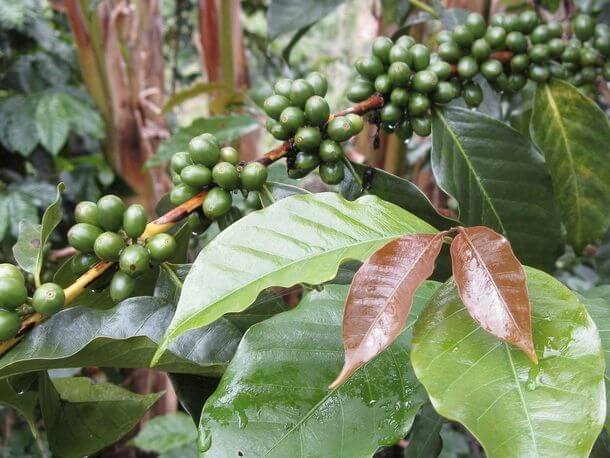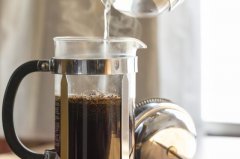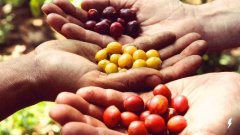What are the producing areas of boutique coffee? the list of boutique coffee bean producing areas in 2019

Professional coffee knowledge exchange more coffee bean information please follow the coffee workshop (Wechat official account cafe_style)
What are the producing areas of fine coffee? We all know that fine coffee pays attention to from seeds to cups, and there are very strict requirements for the original ecology of the producing area and the picking and treatment of farmers, so not all coffee producing areas in the world can produce fine coffee. Of course, the definition of boutique coffee is generally simply summarized and cup test scores, so as long as enough efforts, coupled with the appropriate time, place and people, of course, in theory, all coffee-growing places have the potential to produce boutique coffee. Today, however, the editor is going to show you that the top 10 producing areas that produce the most and most famous boutique coffee, the list of boutique coffee producing areas in 2019:
"coffee belt" and "coffee output"
Coffee production is mostly located between the Tropic of Cancer, 25 degrees north of the tropical or subtropical equator and 30 degrees south of the equator. An area with an annual average temperature of 16-25 degrees Celsius, no Frosts Descent and rainfall of 1600-2000 mm. At present, coffee is mainly produced in more than 70 countries, most of which are located in areas with an altitude of 300,400m, and coffee trees are sometimes planted on highlands at an altitude of 2000-2500 meters, but those planted on hillsides above 1500 meters above sea level have better quality.
Coffee trees grow in an annular zone within 25 degrees north-south latitude with the equator as the center, and are called coffee belts in tropical or subtropical agricultural gardens. In addition, growing coffee also requires daylight and proper shade, which is most suitable for planting on fertile soil or volcanic ash soil. Therefore, the origin of coffee is widely distributed in South America, Central America, the West Indies, Asia, Africa, Arabia, the South Pacific and Oceania. Such as Ethiopia and Tanzania in Africa, Brazil, Colombia, Jamaica, Guatemala, Mexico, Honduras, Costa Rica in Central and South America, Vietnam and Indonesia in Southeast Asia, are all major coffee producers.
1. Ethiopia Ethiopia
Ethiopia is an agricultural country with a history and tradition of coffee origin. The place where the name "coffee" comes from is Kafa in the southwest, while the Sidamo place in the south is the main producing area, and Yega Xuefei is one of the southern producing areas of Sidamo. Eastern Highland Hara is as famous as the coffee name "Hara".
Ethiopia is an important coffee producer with about 12 million people engaged in coffee production and is a major exporter of Arab coffee beans in Africa. The high-quality coffee here is of excellent quality and is worth looking for. It has a soft taste, with wild flavor of wine, and slightly sour taste, unforgettable after drinking.
2. Kenya Kenya
Kenya grows high-quality Arabica coffee beans, which absorb almost the essence of coffee cherries, with a slightly sour, thick aroma, and are very popular among Europeans, especially in Britain. Kenya Coffee surpasses Costa Rican coffee and becomes one of the most popular coffee. With aromas of mellow wine and flowers, the texture is full, small and round. Kenyan AA coffee is the best coffee in Africa, with a thick and full texture, slightly acidic, smooth taste and slightly alcoholic aroma. AA represents the highest quality coffee beans in Kenya.
3. Colombia Colombia
Colombia is one of the largest producers of high-quality coffee in the world, a bright pearl in the world coffee map and a coffee land blessed by God. Arabica coffee is grown on steep slopes 800 to 1900 meters above sea level and is hand-picked and washed.
Mainly Kaddura species and mixed-race Columbia species. Colombia's rich geomorphology and microclimate have created its diversity of styles, and its unique low-latitude and high-altitude geography is an excellent condition for the growth of boutique coffee, so many coffee farmers have sprung up to grow, pick and process independently.
4. Guatemala Guatemala
Guatemala is a coffee producing area that can not be ignored and is a typical representative of coffee flavor diversity. SHB (hardest bean) in Guatemala is almost a well-known synonym for high-quality coffee. This is because there are more than 300 kinds of microclimate, high mountains, Pacific Ocean, Atlantic Ocean, huge volcanic lake, Mexican plain. And rich geographical and climatic resources.
Compared with the above, this is a small area of producing area surrounded by mountains, rivers, lakes and seas, but although the sparrows are well-equipped, "sitting on tropical rain forests, volcanic geology, plateau valleys, and more than 300 microclimates throughout the territory" (from Han Huaizong's New Edition of Coffee), Guatemalan coffee has a distinct, full taste and is unique.
5. Costa Rica Costa Rica
The coffee beans produced at the high latitudes of Costa Rica are famous in the world, full-bodied, mild in taste, but extremely sour. The coffee beans here have been carefully processed, which is why they have high quality coffee. Located in the south of SanJos é, the capital of Tarasu, Costa Rica is one of the most valued coffee growers in the country.
Costa Rica's coffee industry set sail very early, coffee farmers can enjoy a very high status here, can be described as a coffee maker's paradise. And Costa Rica's law allows only Arabica coffee, which is rare in the world. High-quality Costa Rican coffee beans, known as "extra hard beans", can withstand planting conditions above 1500 meters above sea level. In addition to the traditional washing method, Costa Rica also created a "Honey Coffee" half-sun treatment method, which makes the coffee flavor bright and sweet.
6. Honduras Honduras
Seemingly unpopular coffee producing area, Honduran coffee is relatively unfamiliar to many people because of the turbulent times, but it is one of the main coffee exporters in Central America, second only to Guatemala. Two kinds of coffee in Honduras are the most famous: "Highland Coffee", which grows at an altitude of 100-1500 meters, and "specially selected Highland Coffee", which represents the highest level of Honduras at an altitude of 1500-2000 meters.
7. Indonesia Indonesia
Speaking of Indonesia, in addition to the controversial civet coffee, there is also (Batak) Manning from Sumatra. Both have become synonymous with Indonesian boutique coffee. Mantenin, with its unique herb and forest fragrance, grows in Sumatra, known as the "Spice Island". No wonder its unique flavor. The golden manning is mellow and sweet, and the aged manning tastes as sweet as honey.
Coffee cultivation in Mantenin, Sumatra, began in the 18th century, when it was planted near Aceh province on the north side of Lake Tawar. For a few days, most of the Sumatran coffee area is located in the south of Lindong, Subu and Takengon coffee. Because there is little difference between planting areas, Sumatran coffee does not use the producing area as the distinguishing standard, but the way of picking and handling has a great influence on the flavor of Sumatra coffee. The famous "Golden Manning" is an excellent product after the Japanese strictly control these procedures.
8. Rwanda Rwanda
The rapidly growing producing areas have become one of the star producing areas that can host international coffee competitions. "since the 1920s, Arabica coffee grown in Rwanda has been famous all over the world for its unique fruit sweetness and strong grass aroma." (from China Coffee Network) has the advantages of high altitude and fertile volcanic soil, creating a refreshing, clear and fruity flavor of Rwandan coffee.
Like many African countries, Rwandan coffee is mainly produced by small farmers, and the ripe cherry fruits are collected and sent to the processing station every year during the harvest period. During the annual harvest period, the ripe coffee berries picked by farmers are concentrated in the treatment station for treatment, and the ripe coffee berries picked by farmers during the annual harvest period are concentrated in the treatment station for treatment. First of all, they are selected by hand to ensure that no immature or damaged fruit is mixed in. Rwanda can be said to be a fast-growing boutique coffee producer in East Africa recently.
9. Panama Panama
The only geisha (Geisha Rose Summer) can reach the peak, which is the impression of Panamanian coffee in the minds of most people. In May 2007, in the roaster Cup Test Competition held by the American Fine Coffee Association, Rosa Panamanian won the honor of "the world's best coffee" and sold at a high auction price of 130 US dollars per pound, setting a world high. In the rosy summer, which is like a fish in water on the world stage, there is a strong aroma of citrus, jasmine and other fragrant flowers, with bright and changeable acidity. Although the output from Panama is small, there has long been a saying in the coffee industry that "one Panamanian bean is worth three beans", which shows its high quality.
Panamanian caffeine is famous in the world, and the reason is that it is closely related to Panama's unique physical and geographical conditions. Moderate curry body, smooth taste, delicate acidity, well-balanced taste value, coupled with subtle flavors such as caramel, chocolate, citrus and jasmine.
10. Hawaii, USA (UnitedStates)
Finally, we have come to the country that consumes the most coffee. As the only coffee producer in the United States, the coffee beans produced in Hawaii have a good record. Among them, Kona in Hawaii has a long history and is called "after low altitude coffee". It has soft and bright sour aroma and tastes cleaner and more elegant.
In the end, the editor warned that when you see the coffee in the above producing areas, do not think that all coffee beans must be high-quality coffee. After all, fine coffee itself is strict, and its quality testing is stringent. Not all high-quality producing areas and excellent weather and geography will certainly be able to grow fine coffee, while the output of fine coffee is only a minority in any coffee producing area or manor. Because the manpower and material resources needed to produce high-quality coffee are often not easily borne by bitter farmers, moreover, the natural conditions may not be all satisfied, so, no matter how good the producing areas are, they still have to look at the specific coffee bean cup test scores to ensure that they are high-quality coffee beans.
END
Important Notice :
前街咖啡 FrontStreet Coffee has moved to new addredd:
FrontStreet Coffee Address: 315,Donghua East Road,GuangZhou
Tel:020 38364473
- Prev

The Development of Fine Coffee (scaa) A brief introduction to the concept and definition of Fine Coffee
Professional coffee knowledge exchange more coffee bean information Please follow the coffee workshop (Wechat official account cafe_style) in recent years, coffee drinkers have more or less heard the term boutique coffee, but the editor can guarantee that even professional coffee practitioners, nine times out of ten, can not say what the definition of standard premium coffee is. It's not that the concept of fine coffee is so vague.
- Next

What are the three waves of coffee? When will the fourth wave of coffee arrive?
Professional coffee knowledge exchange more coffee bean information Please follow coffee workshop (Wechat official account cafe_style) Coffee drinkers have mostly heard of the third wave of coffee, so does anyone know what is the first wave of coffee and what is the second wave of coffee? How do these coffee waves make people feel different? When is the fourth wave of coffee?
Related
- Beginners will see the "Coffee pull flower" guide!
- What is the difference between ice blog purified milk and ordinary milk coffee?
- Why is the Philippines the largest producer of crops in Liberia?
- For coffee extraction, should the fine powder be retained?
- How does extracted espresso fill pressed powder? How much strength does it take to press the powder?
- How to make jasmine cold extract coffee? Is the jasmine + latte good?
- Will this little toy really make the coffee taste better? How does Lily Drip affect coffee extraction?
- Will the action of slapping the filter cup also affect coffee extraction?
- What's the difference between powder-to-water ratio and powder-to-liquid ratio?
- What is the Ethiopian local species? What does it have to do with Heirloom native species?

